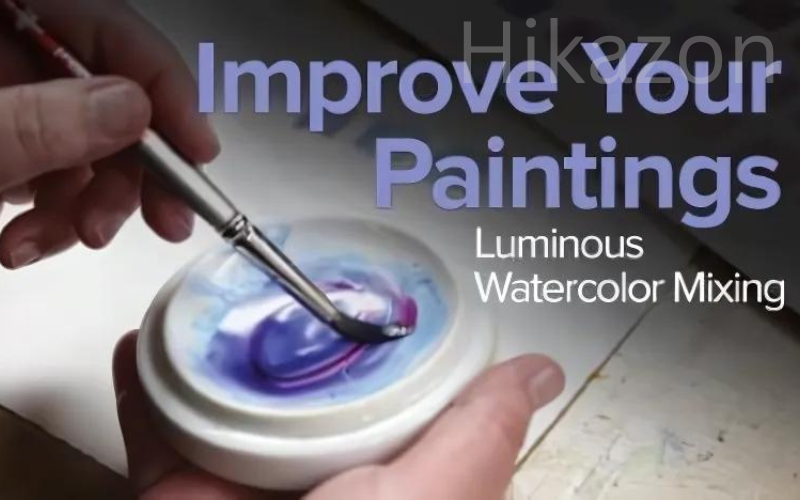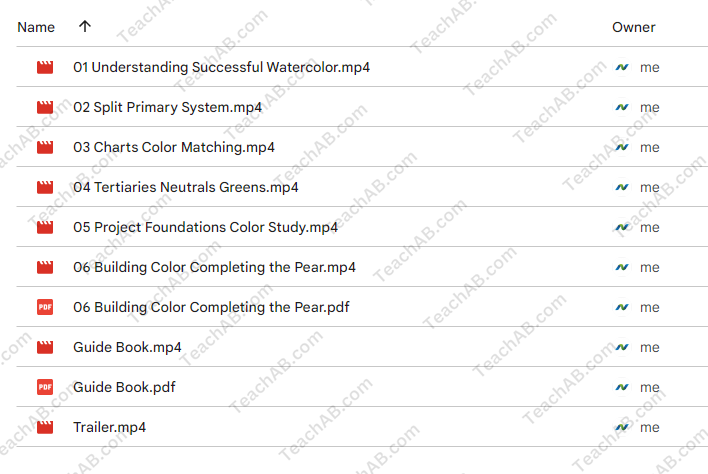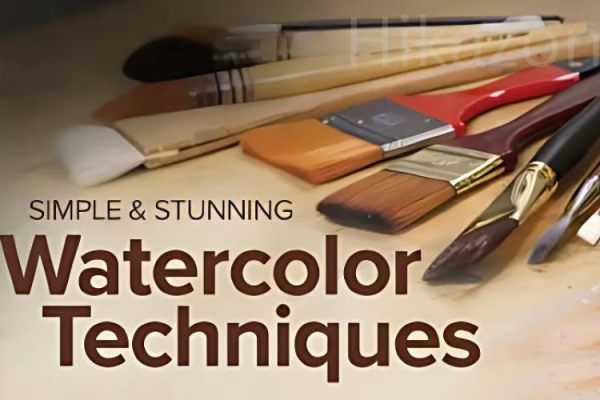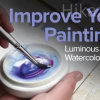Improve Your Paintings: Luminous Watercolor Mixing By Kateri Ewing
$39.00 $5.00
Improve Your Paintings: Luminous Watercolor Mixing By Kateri Ewing – Digital Download!
Content Proof:
Improve your paintings: luminous watercolor mixing
Watercolor painting is often described as capturing the essence of nature in its lightest and most fluid form. This delicate dance between pigment and water gives rise to breathtaking landscapes, vibrant still lifes, and ethereal portraits. Yet, many artists encounter challenges while trying to evoke the luminosity of their subject matter, often resulting in muddy or lifeless hues that fail to convey the intended emotion. Fortunately, “Improve your paintings: luminous watercolor mixing” led by the talented professional watercolorist Kateri Ewing, offers a beacon of light for those lost in the labyrinth of color mixing. This engaging and educational course is meticulously structured to equip artists whether beginners or those looking to refine their craft with robust skills in mixing watercolors to achieve those vibrant hues and luminous neutrals.
In this review, we will delve into the foundational aspects of the course, its unique features, and its overall impact on artists’ skills. This exploration will reveal how Ewing’s instructional approach empowers artists to transform their artwork from bland to brilliant, igniting a passion for watercolor painting that many never knew they had.
Course Overview
Introduction to Color Theory and the Palette
At the heart of Ewing’s course is a systematic exploration of color theory. This foundational aspect serves as a launching pad for more advanced mixing techniques. Understanding color theory is akin to learning the alphabet before writing a novel; it’s essential for creating works that resonate with viewers. The curriculum includes the creation of a 15-color wheel, a practical tool that visually organizes primary and secondary colors, allowing artists to intuitively understand relationships between hues.
Key Components of the Color Theory Segment:
- Primary Colors: Red, blue, and yellow, the building blocks for all other colors.
- Secondary Colors: Orange, green, and purple, created by mixing primary colors.
- Warm and Cool Colors: Understanding the emotional impact of each hue; warm colors evoke energy, while cool colors induce calmness.
Ewing’s approach to organizing the palette is particularly noteworthy. By encouraging artists to create their personalized color charts, the course instills confidence in color recognition and mixing. Artists learn to match colors observed in their environment, which is a crucial skill for achieving realism in their work.
Avoiding Muddy Colors and Achieving Clean Tones
One of the most common pitfalls in watercolor painting is the unintentional creation of muddy colors. Ewing emphasizes the importance of maintaining clarity and luminosity in one’s work. She passionately shares specific methods to avoid this common problem, such as limiting the number of colors used in a mixture and working with transparent pigments.
Artists are introduced to concepts like glazing applying thin layers of color to build depth without obscuring the luminosity beneath. The emotional resonance embedded in Ewing’s teaching style shines through here; she likens achieving clean tones to a clear stream, where the colors dance vibrantly under the sunlight, rather than a murky pond where colors blend into a dull wash.
Structured Learning: Lessons and Practical Exercises
One of the standout features of this course is the clear structure of each lesson. Ewing guides her students through practical exercises that encourage hands-on learning. For example, aspiring artists may find themselves experimenting with limited palettes in initial lessons before moving on to more complex applications in subsequent sessions. This gradual build-up is akin to climbing a mountain; each step is essential for reaching the summit of one’s artistic potential.
Course Breakdown:
| Lesson Number | Topic Focus | Duration |
| 1 | Introduction to Color Theory | 20 minutes |
| 2 | Primary vs. Secondary Colors | 18 minutes |
| 3 | Techniques to Avoid Muddy Colors | 22 minutes |
| 4 | Layering Glazes for Depth | 24 minutes |
| 5 | Creating Personalized Color Charts | 18 minutes |
| 6 | Final Project – Painting a Pear | 16 minutes |
Through these lessons, artists not only gain technical skills but also embrace the emotionality behind watercolor where each stroke becomes a whisper of their unique narrative.
Student Experiences and Outcomes
Transformative Learning
Many students have reported significant improvements in their watercolor techniques after participating in Ewing’s course. The reviews reflect a shared sentiment her calm demeanor and clear instructions make the learning process enjoyable and accessible. Participants often find themselves rekindling their love for painting, ultimately leading to a more profound connection with their creative expression.
One student recalls, “Before taking this course, I always felt defeated by my colors. Now, I can see vibrancy in everything I paint! Kateri’s methods have transformed my approach!” Such testimonials illustrate the emotional transformation that occurs when an artist no longer feels limited by their tools. They discover that watercolors can capture the essence of fleeting moments, from a sunlit garden to the crystalline depths of a serene lake.
Culmination of Skills: Painting a Pear
The course culminates in a project where participants apply their acquired skills to paint a pear. This exercise not only tests their ability to mix and layer colors accurately but also crystallizes their learning into a tangible result. Using methods for transferring line drawings and layering glazes allows students to experience the joy of watching their creations come to life.
This project exemplifies Ewing’s philosophy of embedding practical application in artistic learning. By focusing on a single subject, students can apply the myriad of techniques they’ve learned, ultimately feeling a sense of accomplishment as they unveil their finished artwork.
Conclusion
In closing, Kateri Ewing’s “Improve your paintings: luminous watercolor mixing” is not just a course; it’s an enlightening journey through the world of watercolor. Ewing’s emphasis on color theory, clean mixing techniques, and structured learning creates a rich tapestry for artists to explore and develop their skills. The course has transformed many students’ relationships with watercolor, allowing them to express emotions and capture beauty with newfound confidence.
If you’d like to elevate your paintings and embrace the luminosity that watercolors can offer, this course serves as a beacon of guidance, inviting artists to embark on their own colorful adventures. Embrace the potential of your brush and immerse yourself in Ewing’s insights; you may just find that the vibrant world of watercolor painting is waiting for you to discover it.
Frequently Asked Questions:
Business Model Innovation: We use a group buying approach that enables users to split expenses and get discounted access to well-liked courses.
Despite worries regarding distribution strategies from content creators, this strategy helps people with low incomes.
Legal Aspects to Take into Account: Our operations’ legality entails several intricate considerations.
There are no explicit resale restrictions mentioned at the time of purchase, even though we do not have the course developers’ express consent to redistribute their content.
This uncertainty gives us the chance to offer reasonably priced instructional materials.
Quality Assurance: We guarantee that every course resource you buy is exactly the same as what the authors themselves are offering.
It’s crucial to realize, nevertheless, that we are not authorized suppliers. Therefore, the following are not included in our offerings:
– Live coaching sessions or calls with the course author.
– Entry to groups or portals that are only available to authors.
– Participation in closed forums.
– Straightforward email assistance from the writer or their group.
Our goal is to lower the barrier to education by providing these courses on our own, without the official channels’ premium services. We value your comprehension of our distinct methodology.
Be the first to review “Improve Your Paintings: Luminous Watercolor Mixing By Kateri Ewing” Cancel reply
You must be logged in to post a review.
Related products
Art & Entertainment
Art & Entertainment
CGI COMPLETE BUILD: SHOE RENDERING AND RETOUCHING by DUSTIN VALKEMA
Art & Entertainment
Art & Entertainment
Art & Entertainment
Art & Entertainment
Filmmaking and Storytelling: The Casey Neistat Approach to Making Movies By Casey Neistat
Art & Entertainment
How to Make Short Form Videos for the Internet By Jesse Driftwood
Art & Entertainment
Video Editing for Beginners – Complete Shotcut Masterclass By Stone River eLearning
Art & Entertainment
Art & Entertainment
Visual Notetaking: A Beginner’s Guide to Sketchnotes By Giselle Chow
Art & Entertainment



















Reviews
There are no reviews yet.